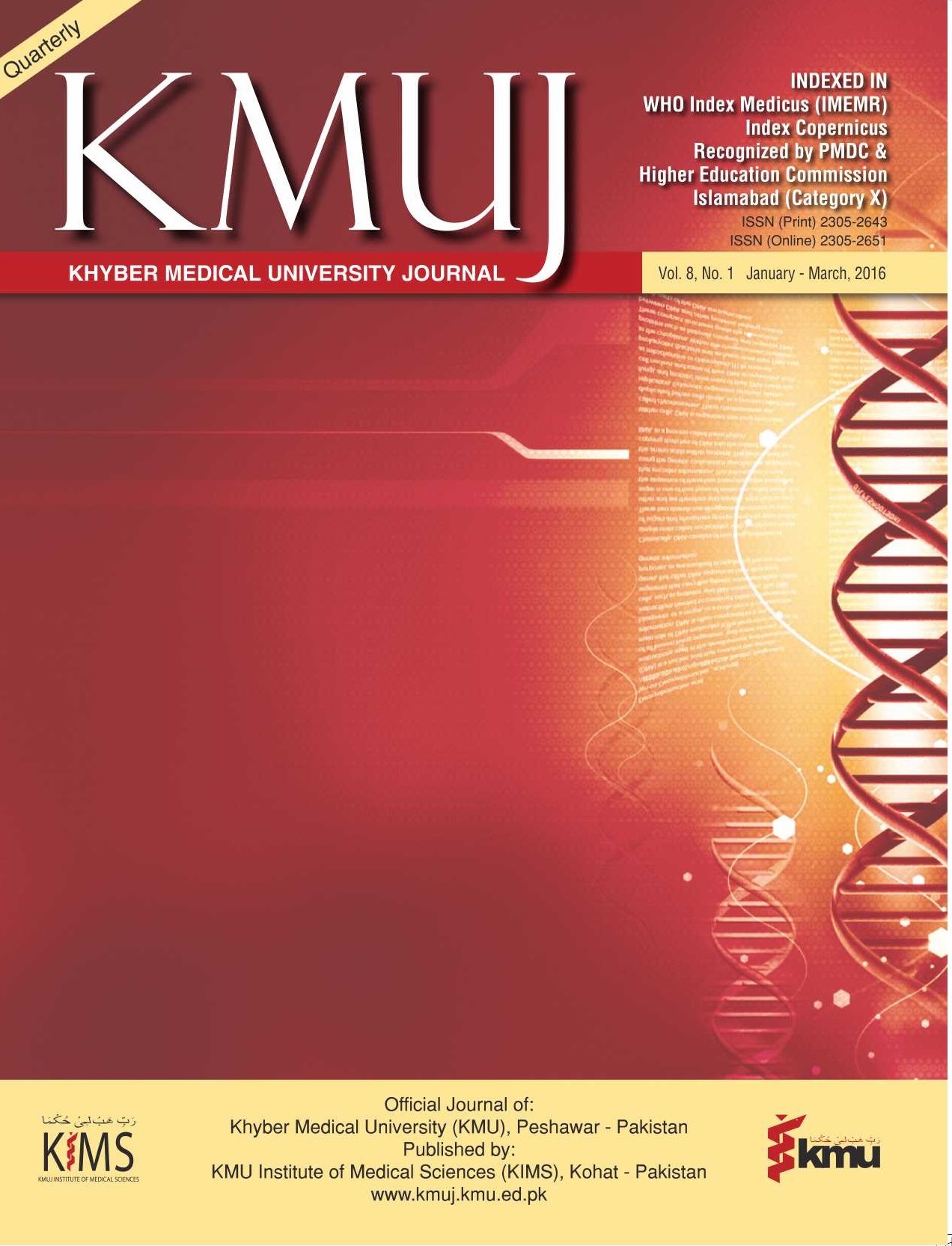Barriers to rehabilitation treatment among poliomyelitis infected patients in Karachi, Pakistan: a mix methods study
Main Article Content
Abstract
Objective
To identify the potential barriers to polio rehabilitation treatment in patients of Karachi, Pakistan.
Methodology
A mix methods study was conducted in the city of Karachi, Pakistan for 4 months and gathered data from polio survivors and physical therapists involved in rehabilitation treatment of polio patients. The study had a quantitative part supplemented by a questionnaire and a qualitative part in which in-depth interviews were conducted. The study was approved by the Ethical Committee of Research Review Board, Clifton Hospital and Board of Advance Study and Research (BASR) of Hamdard University, Madinatul Hikmah, Karachi, Pakistan.
Results
A total of 102 physical therapists and 120 polio survivors consented to participate. The mean age of the physical therapists was 36.1 years (SD 6.4), majority was male (77.5%) and with work experience of over 10 years (44.1%). The mean age of the polio survivors was 30.6 years (SD 8.4). Majority had low monthly family income i.e. PKR 15000 (US$ 147.38). Major barrier perceived by physical therapists was financial constraint (41.2%). Pushtun ethnicity (34.3%) was also perceived as a major barrier. Major and minor barriers perceived by polio survivors were financial constraint (95%) and treatment attendance (68.3%) respectively.
Conclusion
Poliomyelitis is an infectious disease of poverty. Our study highlighted low family income of the polio survivors. Since most of the patients in the country have to bear medical cost directly, Pakistan’s polio rehabilitation program is hindered by financial issues for most part. The health care authorities must formulate a strategy to assist patients financially in attending rehabilitation treatment program.
Article Details
Work published in KMUJ is licensed under a
Creative Commons Attribution 4.0 License
Authors are permitted and encouraged to post their work online (e.g., in institutional repositories or on their website) prior to and during the submission process, as it can lead to productive exchanges, as well as earlier and greater citation of published work.
(e.g., in institutional repositories or on their website) prior to and during the submission process, as it can lead to productive exchanges, as well as earlier and greater citation of published work.
References
Atta Abbas, Nida Yazdani. Polio Dilemma: A wake-up call for Pakistan. Medical Science. 2014; 13: 88-9.
Atta Abbas, Syed Baqar Shyum Naqvi. Polio in Pakistan. PhD Thesis. 2015. Hamdard University.
Parental perceptions surrounding polio and self-reported non-participation in polio supplementary immunization activities in Karachi, Pakistan: a mixed methods study. Bulletin of the World Health Organization 2012; 90:822-30. doi: 10.2471/BLT.12.106260. s.l. : Asif Raza Khowaja, Sher Ali Khan, Naveeda Nizam, Saad Bin Omer and Anita Zaidi.
[Online] City District Government Karachi. CDGK towns. http://www.karachicity.gov.pk/ (2014) Accessed 20 July 2015.
Understanding the dynamics of Poliomyelitis spread in Pakistan: A retrospective 15 year study. Atta Abbas, Nida Yazdani, Ken McGarry. In press.
Phone Book Online. Physiotherapy Clinics in Karachi. http://www.phonebook.com.pk/dynamic/search.aspx?SearchType=kl&k=Physiotherapy&l=Karachi. [Online]
The survey system. Sample size calculator. http://www.surveysystem.com/sscalc.htm. [Online]
Hasan Mansoor. Karachi’s 6pc areas contribute to all polio cases. Dawn News. http://www.dawn.com/news/1141624 (2014) Accessed 21 July 2015.
Physiotherapy: A neglected field. Dawn.com. [Online] http://www.dawn.com/news/668183/physiotherapy-a-neglected-field.
Muhammad Naveed Babur , Farah Rashid Siddique , Waqar Ahmed Awan. Future of physical therapy in Pakistan - Satisfaction amongst Pakistani physical therapists about their profession. Isra Medical Journal. 6(1): 25-27.
Treating female patients. Central Mosque. [Online] 2015. http://www.central-mosque.com/index.php/General-Fiqh/male-doctors-female-patients.html.
Guide to Therapeutic Relationships and Professional Boundaries. College of Physiotherapists of Ontario. [Online] 2013. http://www.collegept.org/Assets/registrants'guideenglish/standards_framework/standards_practice_guides/Therapeutic_Relationships_Prof_Boundaries_Guide130527.pdf.
Rules of Professional Conduct. 2nd Edition. The Chartered Society of Physiotherapy. London. 2002. ISBN 0-9528734-3-5.
